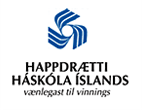Question
How did the Icelandic horse develop?
Asked By
Silja Rún Stefánsdóttir, b. 1992
Answer
This answer will seek to show how the Icelandic horse changed after its arrival in Iceland more than a thousand years ago. The same author has written about the ancestors and origin of the Icelandic horse on the Icelandic Web of Science in his answer to question Where did the Icelandic horse originate? There is no known evidence of horses having been imported to Iceland after the settlement.In Iceland the horse has adapted to the environment and to selection by man. In hard winters in past centuries, horses' hooves sometimes froze to the ground in exposed winter pastures. The horses that survived were those that could withstand such extreme conditions, those with a good protective layer of fat and with a long and dense winter coat to insulate from the sub zero temperatures.

Icelandic horse in winter coat
© Ragnar Th. Sigurðsson.
Horses perished in their thousands, of fluoride poisoning and starvation, as a result of the catastrophic after-effects of the 18th century Laki eruption. This could have changed the breed, if some horses had better resistance to the effects of fluorine contaminated grass. But there is a lack of knowledge on farm stock resistance to fluorine contamination.1
Man's influence on the breed may have been great, both deliberate and unwitting. So the breed could have discernably changed over a long period of time. But nature and man determined the fate of horses used in long-haul cargo treks, e.g. for moving merchandise like dried fish between regions. Some horses were stronger than others and withstood the work load better. The mares that performed better than others had foals if they made it home, but not those who gave up en route. Early in the 20th century, selective breeding of horses was commenced. Stud stallions were chosen and released in paddocks with selected mares, to improve the currently most valued qualities. This process is called breeding and is now a branch of science. In general, the Icelandic horse now has better qualities than it had before, better build, more varied gaits, better temperament and it arouses the admiration of those who see it. The original horse was good, but nature and man have changed it into a superb animal that is respected and in demand, both at home and abroad. Translated by Paul Richardson. Footnote:
- Hannes Finnsson 1970. Mannfækkun af hallærum, Almenna bókafélagið, Reykjavík.
Um þessa spurningu
Dagsetning
Published16.12.2005
Category:
Keywords
Citation
Stefán Aðalsteinsson (1928-2009). „How did the Icelandic horse develop?“. The Icelandic Web of Science 16.12.2005. http://why.is/svar.php?id=5490. (Skoðað 3.4.2025).
Author
Stefán Aðalsteinsson (1928-2009)fyrrverandi framkvæmdastjóri norræns genabanka fyrir búfé



